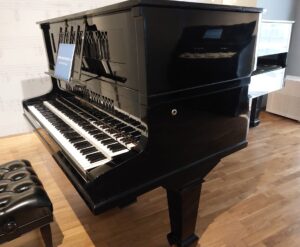Next stop was Prague, a city I’d never previously visited. On Sunday I went to the main Mass at Our Lady before Týn, where the choir located in the west gallery) was accompanied by an orchestra of significant size – I noticed a trombone player and a bassoonist, amongst others. I didn’t recognise the music, which sounded as if it could be by Michael Haydn or one of the various Czech composers of the same period. There were a couple of hymns and our hymnbooks included melodies, but I didn’t twig until too late in Veni Creator Spiritus that the numbers were shown on an electronic display tucked into the elaborate east end. I’d never seen that before.
Perhaps the orchestra was in honour of the feast of Pentecost, but it seemed quite natural to accompany the choir at Sunday Mass in this way. I shall remember that if I ever get to sing the Glagolitic Mass again.
The following day I visited the Czech Museum of Music, which had many highly unusual instruments on view, though sadly the theremin was out of order.
The last thing I did before leaving was to go to the National Museum, and while I was admiring the paintings in a large hallway a string quartet turned up and started rehearsing, again as if this was completely normal. (I think they were then going to entertain a reception for a conference or similar gathering.) A pleasant memory to take away with me.



